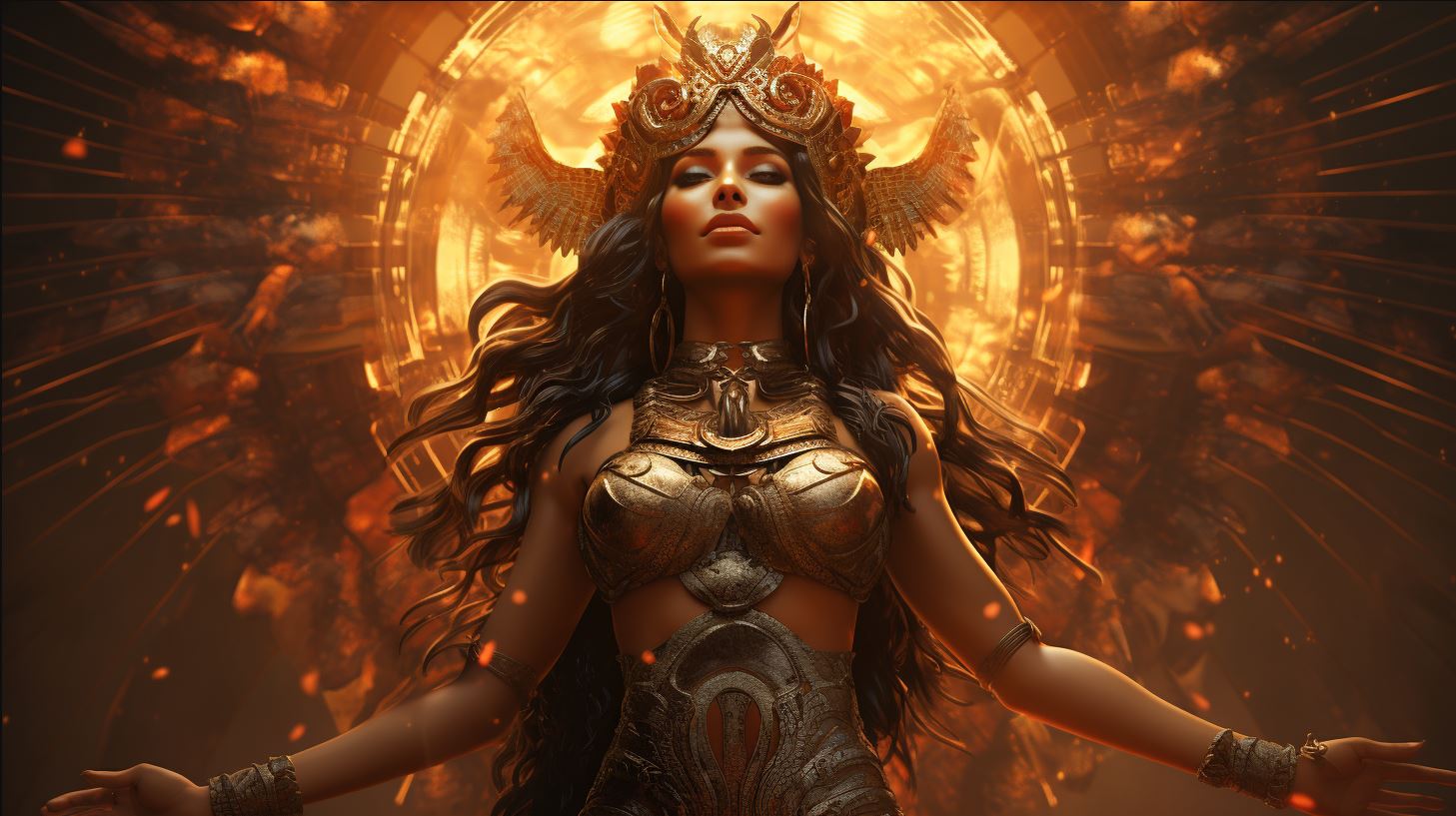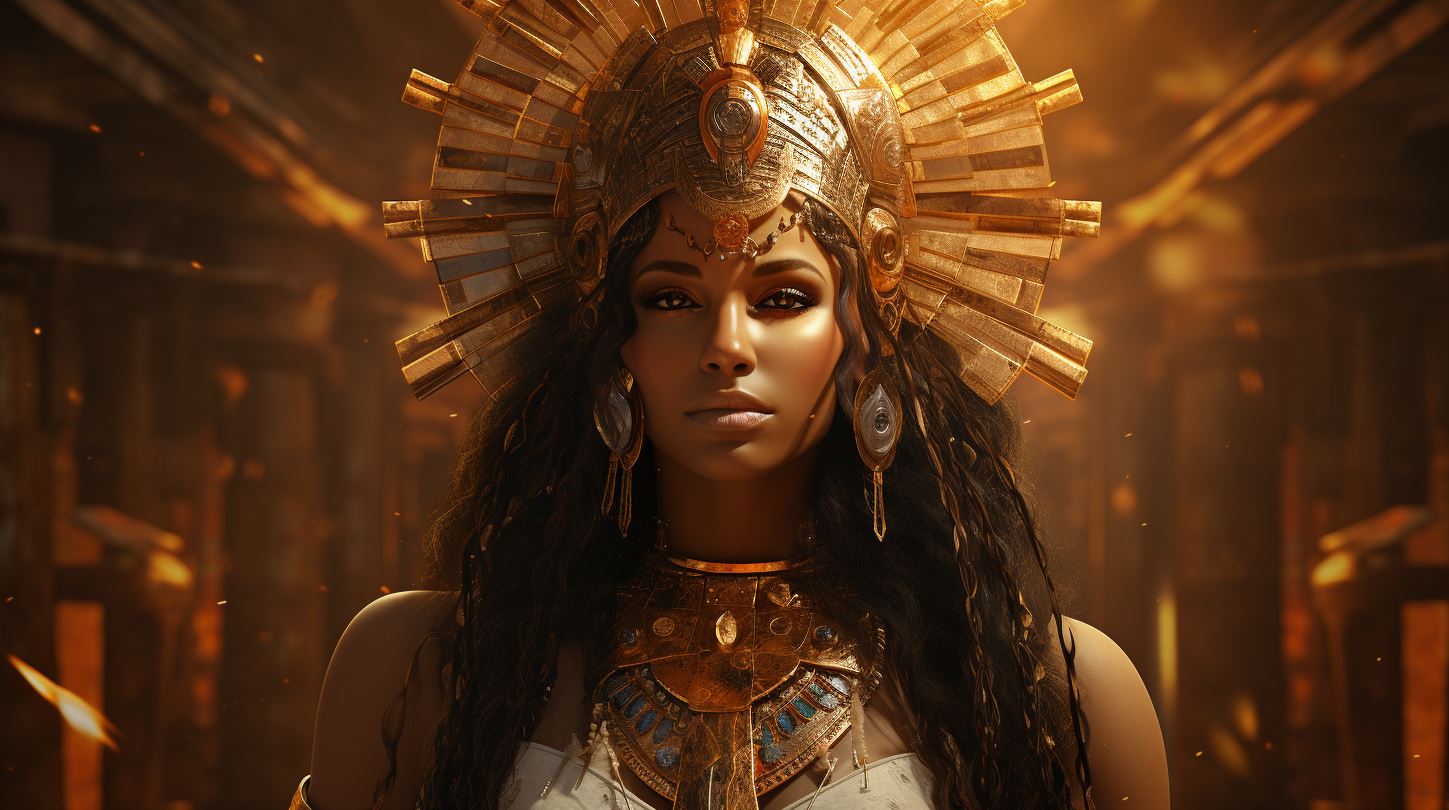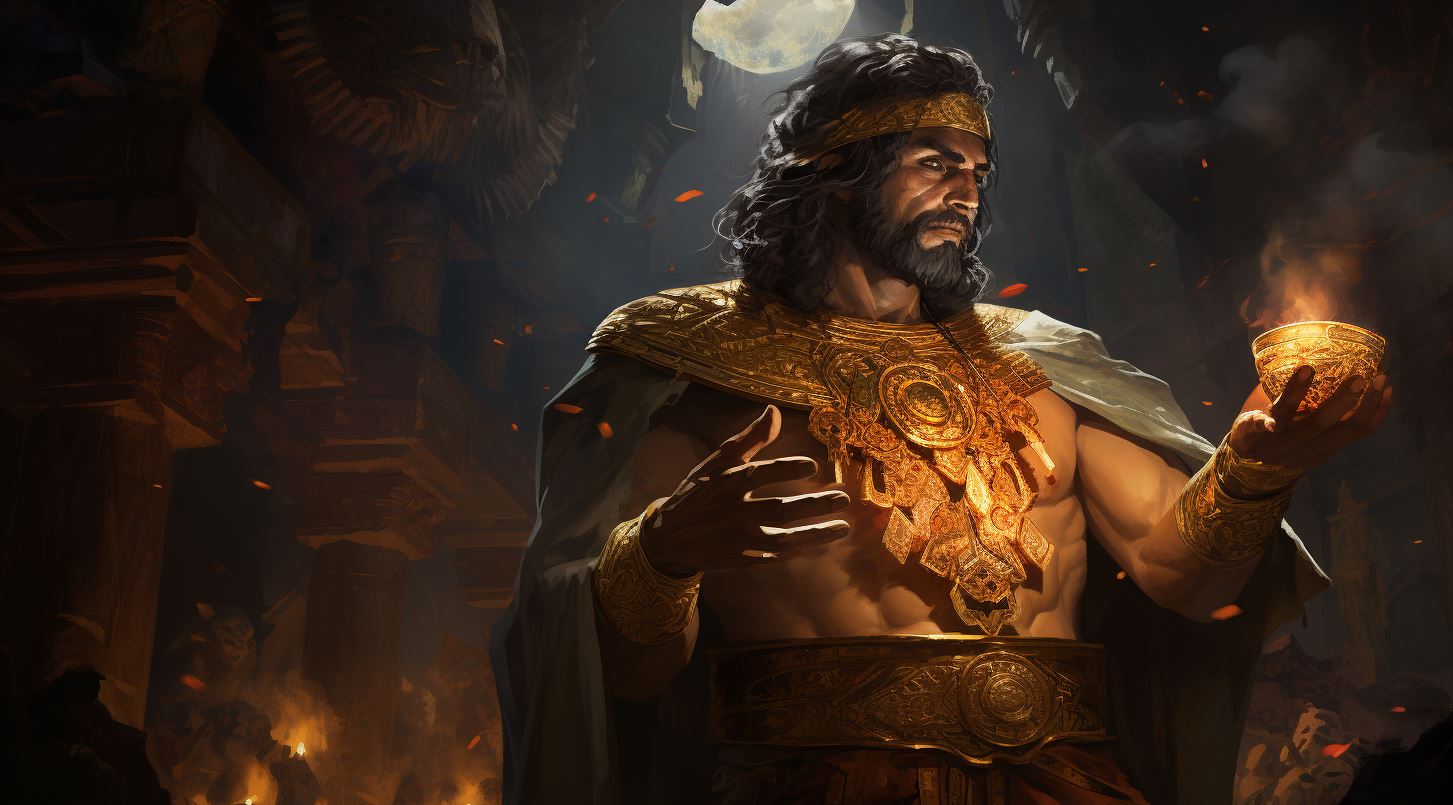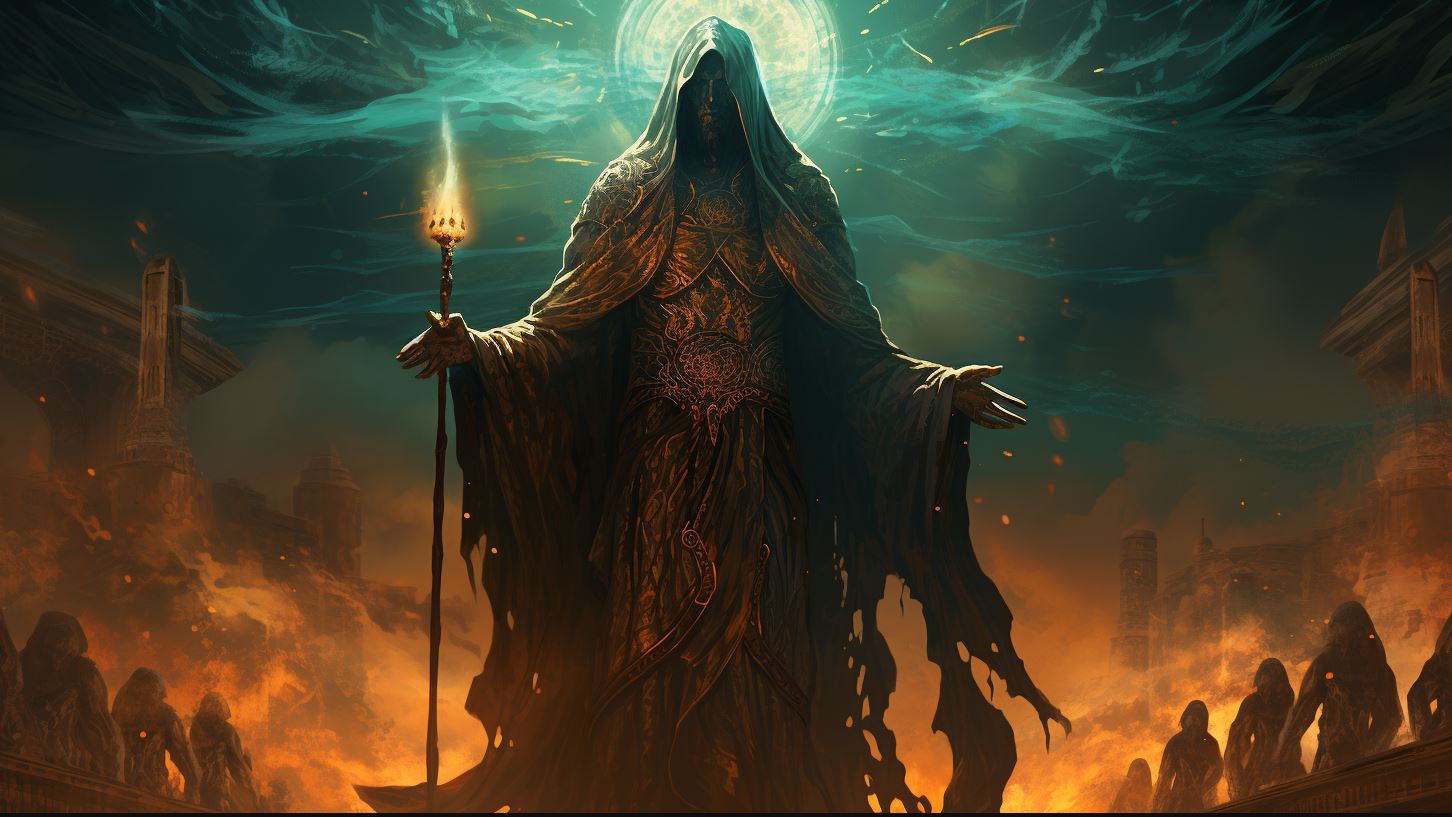Shapash Goddess: The Divine Solar Messenger of Canaan

Shapash Goddess, a prominent figure in ancient Canaanite mythology, holds a significant role as a divine solar messenger. Mentioned in Ugaritic texts and worshipped in Ugarit, Shapash is associated with healing, nature, and the cycle of life.
Legends depict her as a powerful figure who aids in the resurrection of Baal and has the ability to cure snake bites. The influence of Shapash extends to Phoenician and Levantine mythologies, while her connection to Israelite religion remains a subject of exploration.
This article delves into the background, worship, legends, and potential influences surrounding the enigmatic Shapash Goddess.
Background of Shapash Goddess
Ancient Canaanite Mythology
In the realm of Ancient Canaanite mythology, the pantheon of gods and goddesses played a significant role in the religious beliefs of the civilization. Among these divine beings, the Shapash Goddess holds a prominent position as a revered figure associated with the sun and its radiance.
Understanding the context of Ancient Canaanite mythology provides a foundation for unraveling the significance of Shapash’s symbolism and worship.
Ugaritic Texts and Shapash
Through the discovery of clay tablets and documents at the ancient city of Ugarit, scholars have gained insight into the religious practices and beliefs of the Canaanite people. These texts often mention Shapash, shedding light on her importance and role as a celestial deity.
The Ugaritic texts offer glimpses into how Shapash was regarded and worshipped in the ancient Canaanite society.
Role and Attributes of Shapash
Shapash’s significance in Canaanite mythology arises from her association with the sun and its life-giving energy. As a solar deity, she embodies the inherent power and brilliance of the sun, symbolizing warmth, light, and vitality.
Shapash is believed to possess divine attributes such as healing, guidance, and divination, making her a central figure in various aspects of Canaanite religious and cultural practices.
Worship and Beliefs about Shapash
The worship and beliefs surrounding Shapash, the revered Canaanite goddess, played a significant role in ancient cultures.
Understanding her standing in Ugaritic religion, the associated deities and rituals, and her overall importance in ancient Canaan provides deeper insight into the significance of this divine figure.
Shapash in Ugaritic Religion
In Ugaritic religion, Shapash held a prominent position among the pantheon of deities.
Her presence brought blessings and prosperity, especially during harvest seasons when crops relied on sunlight for growth and abundance.
Shapash was not an isolated deity but shared connections with other gods and goddesses in the Canaanite pantheon. In some rituals, she was invoked alongside El, considered the supreme god, and Anat, the goddess of fertility and war.
This association emphasized her importance and role as a mediator between the divine and mortal realms.
Certain rituals dedicated to Shapash focused on seeking her guidance for various purposes. Particularly, worshippers performed ceremonies related to the ascension of kings, emphasizing her role in the alignment of earthly and celestial powers.
Sacrifices and offerings were made to honor and appease her, seeking favor and protection for the ruling elite.
Importance of Shapash in Ancient Canaan
The significance of Shapash extended beyond religious rituals, permeating various aspects of daily life in ancient Canaan. Her association with healing abilities, especially in treating snake bites, emphasized her role as a beneficent and protective deity.
Additionally, Shapash’s connection to nature and the cycles of life made her a central figure in agricultural practices and the overall well-being of the community. People sought her guidance and blessings for successful harvests, ensuring prosperity and sustenance.
Throughout ancient Canaan, Shapash held a position of reverence as a divine messenger, healer, and guardian of important cosmic principles. Her worship and beliefs shaped the cultural fabric of the region, intertwining spirituality with everyday existence.
Legends and Stories Featuring Shapash
Shapash as the Solar Messenger
Shapash, the revered goddess of the sun, plays a prominent role as the solar messenger in Canaanite mythology. She is depicted as a divine emissary, carrying messages between the gods and mortals.
Known as the Torch of the Gods; or “Pale Shapash” in Phoenician culture, she serves as the herald of El or Anat. Often described as a psychopomp, she guides souls to the afterlife.
She later returns Ba’al to Anat, fulfilling her important role as a messenger of the gods.
Shapash’s Role in Mythological Events
However, Anat comes to their rescue and ensures their liberation through a high-stakes game of chance. This tale showcases Shapash’s vulnerability and presents her as an integral part of the divine balance of power.
Shapash’s Healing Abilities and Symbolism
The Shapash goddess possesses remarkable healing abilities, especially in the context of snake bites. She is widely revered for her power to cure the venomous wounds inflicted by serpents. This attribute makes her a guardian figure and a source of solace for those facing the dangers of the natural world.
Shapash’s association with healing aligns her with life-giving and regenerative forces. Moreover, her symbolism as a solar deity also connects her to vitality, warmth, and the cycle of existence.
Within the rich tapestry of Canaanite mythology, the legends and stories revolving around Shapash offer intriguing insights into her multifaceted nature.
As the solar messenger, she bridges the gap between the celestial realm and mortal existence. Her active involvement in mythological events showcases her significance and her healing abilities underline her role as a protector.
Shapash’s portrayal in these legends exemplifies the complex and influential nature of this mesmerizing goddess.
Influence and Connections in Other Mythologies
In addition to her significance in ancient Canaanite mythology, Shapash Goddess exhibits connections and influences in various other mythological traditions. These connections shed light on the widespread influence and cultural exchange that existed in the ancient Near East.
Comparisons with Other Sun Goddesses
Shapash shares similarities with other sun goddesses worshipped in different ancient civilizations. In Mesopotamian mythology, she parallels the goddess Shamash, who also represents the sun and possesses qualities of justice and divine judgment.
The Egyptian goddess Ra, often depicted with the sun disk on her head, also encompasses similar attributes, such as being a creator deity and a source of light and life.
These parallels suggest a common thread of reverence for the sun as a powerful and vital force in the ancient world.
The shared characteristics among these sun goddesses hint at cultural exchanges and influences across civilizations.
Shapash in Phoenician and Levantine Mythologies
Shapash’s influence extends beyond Canaanite mythology and into Phoenician and Levantine mythological traditions. As Phoenician culture developed independently, Shapash retained her importance as a solar deity. She played a vital role in Phoenician religious practices, associated with aspects of fertility, prosperity, and navigation at sea.
Moreover, her divine presence extended to the worship of other deities in the Phoenician pantheon.
In Levantine mythology, Shapash’s prominence persisted, and she continued to be revered as a goddess of light and healing.
Her association with the sun’s life-giving qualities resonated among the people of the region, who sought her blessings for growth, abundance, and protection.
Possible Influence on Israelite Religion
The connections between Shapash and the early Israelite religion remain speculative but offer intriguing insights. The influence of Canaanite mythology, including the veneration of Shapash, on the Israelite religious beliefs and practices is subject to ongoing scholarly debate.
Some researchers propose that certain aspects of Shapash’s worship and symbolism might have influenced the development of Israelite religious traditions, particularly in relation to solar imagery and divine communication. Shapash’s role as a messenger of the gods and her association with healing might have had an impact on the evolving concept of divine revelation among the Israelites.
However, it is important to note that the available evidence is limited, and the exact nature and extent of Shapash’s influence on Israelite religion are still matters of scholarly interpretation.
- Shapash shares similarities with the sun goddesses Shamash in Mesopotamian mythology and Ra in Egyptian mythology.
- In Phoenician and Levantine mythologies, Shapash remains an important solar deity associated with various aspects such as fertility, prosperity, and healing.
- The possible influence of Shapash on Israelite religion is a subject of ongoing debate among scholars, particularly regarding solar imagery and divine communication.
.
..




















